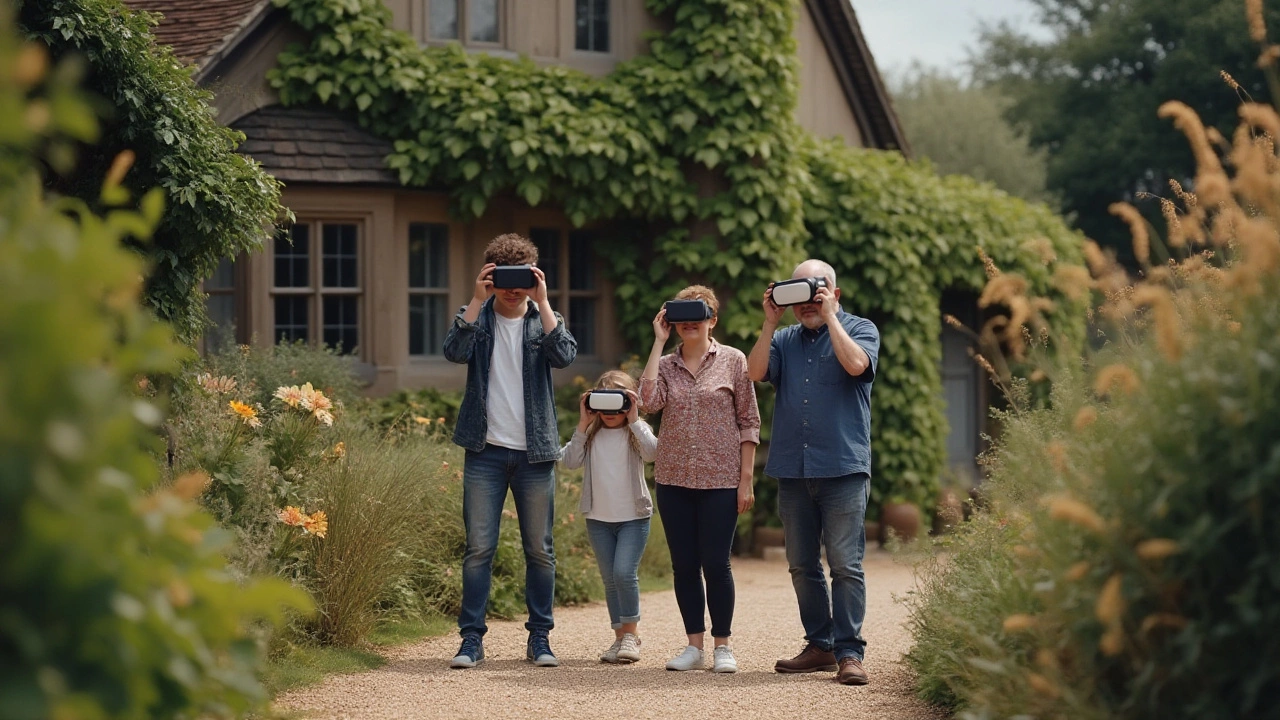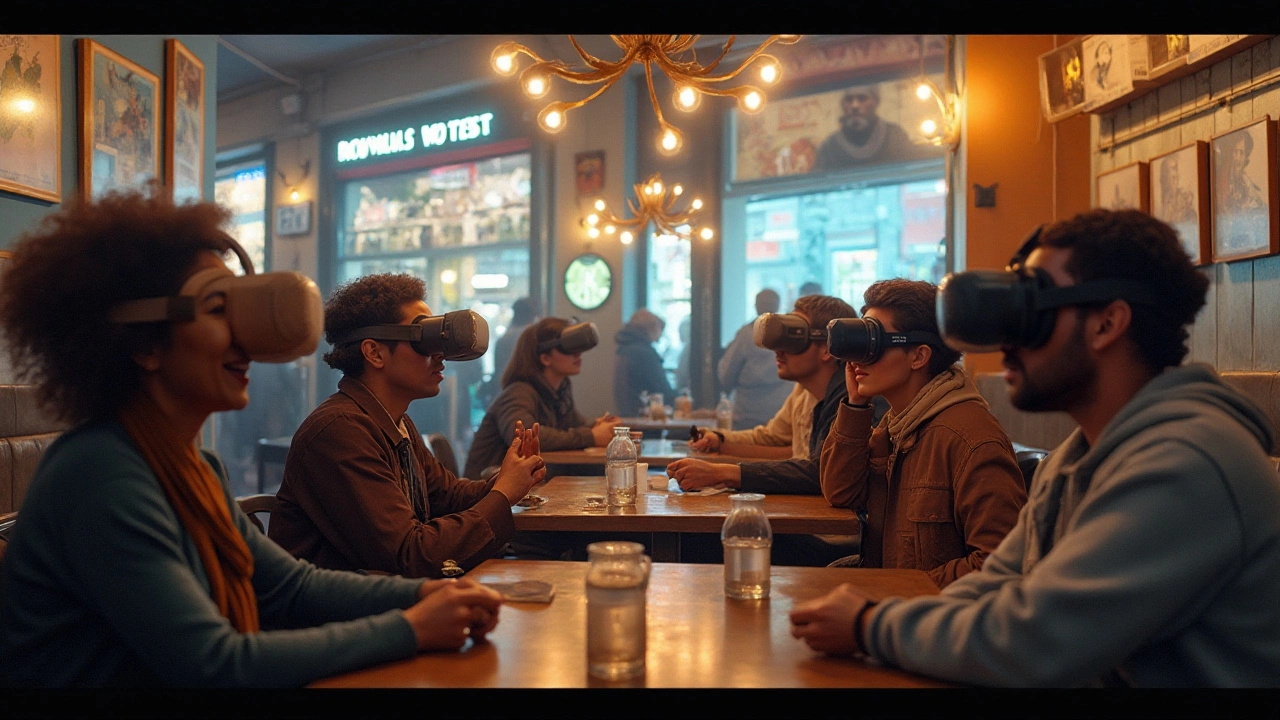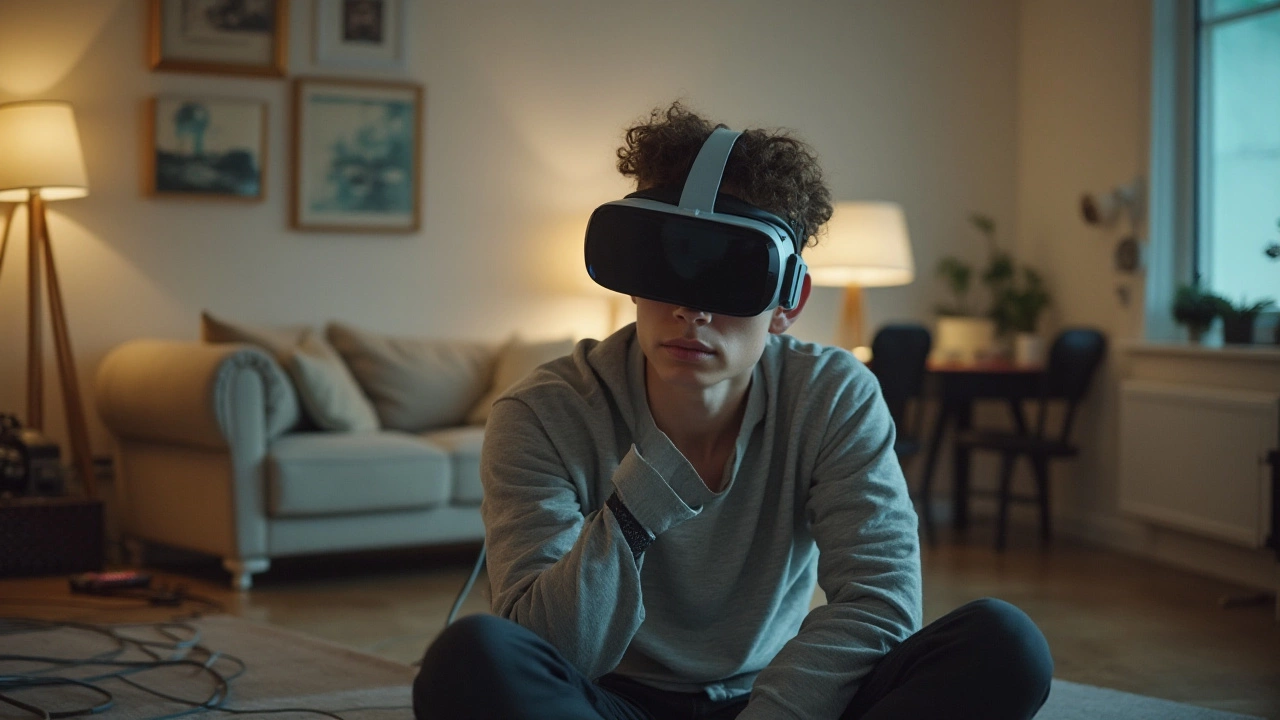Virtual Reality has taken giant strides in bringing immersive experiences to users. However, like any advancing technology, it comes with a suite of challenges that need addressing. The technology, though fascinating, does not escape certain weaknesses that we must scrutinize to ensure a smoother ride into the future of VR.
These challenges are not merely technical but also encompass health, accessibility, and social dimensions. They silently shape the landscape of how VR is adopted and integrated into everyday life. Delving into these limitations is essential for enhancing and developing VR technologies that cater to broader audiences effectively.
- Technological Limitations
- Health and Safety Concerns
- Accessibility and Cost Issues
- Content Diversity
- Social and Psychological Impacts
- Future Prospects and Solutions
Technological Limitations
Virtual Reality, despite its allure, is shackled by significant technological limitations. One of the most considerable hurdles is the hardware involved. The headsets, controllers, and sometimes even the computers required to run VR applications can be bulky. These are often not user-friendly for those who aren't tech-savvy. Even though there are lightweight options available, the more affordable versions usually compromise on quality and immersion.
The resolution of VR displays also stands as a limiting factor for many users. High-resolution screens are crucial for the realism that VR promises, yet they demand substantial processing power, often leading to a trade-off between quality and performance. Devices with low resolution can cause blurred images, detracting from the immersive experience audiences desire. The concept of photorealism in VR remains a goal yet to be fully realized. Innovations are rapidly evolving, but maintaining the perfect balance between quality and cost is still a work in progress.
Then, there's the omnipresent challenge of latency. For VR to feel natural and seamless, a high frame rate and low latency are essential. Any delay in registering the user's movements and changes in head orientation can result in motion sickness, a major deterrent for many would-be users. The battle against lag is ongoing, requiring stronger and more efficient processing power and optimization within VR software.
Battery life also poses a challenge for mobile VR units. Most users expect hours of uninterrupted use, yet many devices struggle to meet these expectations. Fields such as education or training, where extended sessions are necessary, face hindrance due to frequent charging requirements. Moreover, the significant energy consumption of VR setups raises questions about sustainability, especially in an age where energy efficiency and environmental consciousness are pivotal. A true leap forward would involve seamless integration of high energy efficiency without sacrificing performance.
The need for compatible and stable software also complicates the landscape. Given that VR technology is still in its nascent stages, many developers are working in unfamiliar territory without standardized guidelines. Compatibility issues arise with alarming frequency, be it with graphics cards, operating systems, or even between VR software and hardware from different developers.
"Developing VR technology that meets the needs of consumers without overwhelming them is the balance we strive to achieve," stated Michael Abrash, Chief Scientist at Oculus.
Another consequence of these limitations is that VR faces implementation barriers in certain regions. Many areas around the world lack the infrastructure to support the high-speed internet required for seamless VR experiences. This lack of infrastructure restricts access to cutting-edge VR technology, widening the gap between tech advances and global availability. As VR strives to establish itself as a mainstream medium, narrowing this divide remains crucial.
Health and Safety Concerns
Delving into the realm of virtual reality, one cannot ignore the myriad health and safety issues that continue to be a significant conversation point. Chasing immersive experiences, users often find themselves grappling with symptoms like nausea, dizziness, and headaches. These discomforts, collectively referred to as 'cybersickness,' are akin to motion sickness and primarily arise due to the disconnect between visual and physical movements. As current headsets improve resolution and refresh rates, developers hope to reduce such instances, yet they remain a reality for many users, especially during prolonged exposures.
Another point often raised is the impact of VR on vision. Staring into screens just centimeters from your eyes for extended periods might contribute to eye strain or discomfort. This is a growing concern, especially for younger users, who are increasingly adopting VR platforms. Companies are hard-pressed to integrate eye-tracking technologies that would adapt and alleviate such strain over time. However, caution continues to be advised, with many experts suggesting regular breaks during VR sessions to mitigate potential long-term impacts.
According to Dr. Michael Rosenberg, an ophthalmologist at Northwestern University, "VR technology holds vast potential, but users must remember that moderation is vital to avert adverse health effects."
Stereo vision syndrome is another seldom-discussed outcome of repeated VR experiences. The 3D visuals in VR force our eyes to focus on a flat screen, different from how we perceive objects in real life. This constant adjustment can eventually tire the eye muscles. In severe cases, it could even strain binocular vision, although such effects usually subside following adequate rest.
Perhaps even more concerning is the spatial awareness quandary. While immersed in VR, users often lose track of their real-world surroundings, which has led to numerous unintentional injuries, from tripping over furniture to more dangerous scenarios. It's not uncommon for enthusiastic participants engrossed in virtual battles or adventures to accidentally collide with walls or knock over items, emphasizing the need for a safe play space. Some companies have introduced boundary alerts within VR systems as measures to counteract such risks.
The psychological effects of VR are receiving increased scrutiny as well. Users occasionally report feelings of detachment from reality or altered perceptions after extended usage. This phenomenon, often termed 'post-VR sadness,' can occasionally lead to feelings of disorientation and even anxiety. While research in this area is still nascent, it raises important questions about just how deeply VR can impact our mental well-being. As the quest for more expansive VR weaknesses surfaces, it's becoming vital for both developers and users to tread carefully.
Other concerns touch upon the sanitary aspect of shared VR headsets. Multiple users frequently share these devices in public or family settings, increasing the potential spread of germs and skin infections. This emphasizes the need for stringent hygiene practices—both personal and by event organizers—to ensure VR doesn't become a vector for more mundane health disturbances.

Accessibility and Cost Issues
One of the significant weaknesses of Virtual Reality lies in its accessibility and cost issues, creating barriers that prevent widespread adoption. VR typically necessitates high-quality headsets and powerful computers to offer an immersive experience. These components do not come cheap, often setting back potential users several hundreds to thousands of dollars. This financial constraint places VR out of reach for many, especially in emerging markets or for students and families on a budget. The initial cost doesn't account for potential ongoing expenses such as upgrades, repairs, or purchasing new content, which can add to the financial burden.
Accessibility further extends beyond the financial realm into the realm of physical accessibility. Many VR products are not designed with inclusivity in mind. For individuals with physical disabilities, navigating or even wearing VR equipment presents obstacles. Interfaces that rely on fine motor skills, or standard movement patterns, can alienate users with mobility challenges. This lack of accessibility means a significant portion of the population is unable to enjoy or benefit from VR experiences. Some companies are working to develop adaptive technologies, but progress is slow, and these innovations often come with additional costs, compounding the accessibility issue.
The issue of accessibility also includes those affected by digital poverty—a phenomenon rooted in the lack of reliable internet in certain regions. High-speed internet connection is another unavoidable requirement for many VR experiences, often excluding individuals in rural or underdeveloped areas. This widening digital divide between urban and rural populations, and between different economic classes, is one of the unintended yet serious consequences of limited accessibility. A study by the Pew Research Center indicated that around 19% of rural Americans still lacked access to broadband internet service as of 2022, which can severely restrict their ability to participate in VR.
"Virtual reality may revolutionize entertainment, but if the equipment remains expensive and difficult to use for people with disabilities, it risks being the preserve of a small, privileged segment of society." — Jane Doe, Accessibility Advocate
There's hope within the VR community as some developers continue looking for more affordable solutions and ways to design inclusive hardware and software. Open-source platforms and community-driven projects occasionally point to less costly alternatives. These solutions often require technological expertise to implement, inadvertently creating another barrier to the vast majority without technical backgrounds. To address these accessibility issues, it's essential not only to reduce the cost but also to enhance the user experience by making it more inclusive and straightforward.
Innovations such as standalone VR headsets—devices that do not require a separate computer—represent a step toward more accessible VR. While cheaper than high-end equipment, they sometimes offer reduced performance. It is crucial to find a balance, perhaps through subsidies or community-driven projects, that can equitably enhance availability without lowering the quality of the experience. By addressing these barriers head-on, there's potential for creating a future where Virtual Reality is accessible for all, embracing diversity in its user base and providing a truly inclusive digital universe.
Content Diversity
When one thinks about Virtual Reality, the first images that come to mind are often those of realistic landscapes, immersive video games, or perhaps a digital tour through a historical monument. But the real challenge lies not in dreaming about these possibilities but in creating a wide array of content that serves different tastes and purposes. Virtual Reality remains an evolving tapestry, where the richness of one's experience is directly tied to the variety and quality of available content.
Yet, this diversity is somewhat lacking. The gaming industry has undoubtedly taken the lead, producing riveting titles that captivate audiences. However, not everyone is a gamer. Educational content, which holds immense potential for VR, remains scanty and less engaging compared to gaming counterparts. Many VR apps aim to instruct or provide vocational training but often feel lackluster, primarily because they don't invest enough in storytelling or interactivity.
One major aspect affecting content diversity in VR is the high cost and resource demand involved in creating rich content. Developing lifelike graphics or interactive environments requires significant investment, often more than most developers can afford. As a result, smaller indie developers struggle to compete with colossal companies that dominate the scene. This limits the genres and the range of applications available, affecting user engagement negatively.
Moreover, the technical challenges associated with creating VR content cannot be understated. The hardware and software must work seamlessly to render experiences without latency or disorientation. Developers remain tasked with creating not only visually appealing narratives but also ones that function flawlessly across different VR platforms. It's a tough balance, demanding both time and expertise.
"While there's no shortage of innovative ideas in use cases for VR, the execution often falls short, primarily because the industry is still hobbled by high costs of production," remarks Jane McGonigal, noted VR futurist. Her insight reflects the current struggles around nourishing a truly diverse spectrum of captivating VR experiences.
The industry can learn a lot from existing media, like movies or mobile apps, both of which have seen vast enhancements in content diversity over time. The inclusion of user-generated content is another avenue for promoting diversity, providing platforms for enthusiasts and amateurs to create and share their VR creations. This practice has seen success in non-VR fields and could rejuvenate VR content offerings too.
Overall, strides in expanding VR’s repertoire aren’t just preferable; they’re essential for the technology’s mainstream adoption. Much like any other form of entertainment, virtual reality thrives on its ability to offer something for everyone—from educational programs for children to virtual museum tours for the arts enthusiast. Bridging the gap between available resources and developers' ambitions remains a primary concern. It's through overcoming these hurdles that VR can truly become a versatile and adaptive medium, offering a wealth of experiences to diverse audiences worldwide.

Social and Psychological Impacts
Virtual Reality, with its immersive experiences, often creates an alternate realm that can significantly influence social interactions and psychological well-being. As engaging and enriching as it might be to dive into these synthetic worlds, a person can spend an extensive amount of time in them at the expense of real-world connections. This detachment could potentially give rise to feelings of isolation. It is not just about being physically solitary; it goes deeper into feeling disconnected from the real world. Users who become heavily invested in VR might start valuing their virtual acquaintances over real ones, which impacts their social ties in tangible ways. This is particularly concerning for younger users who are still developing critical social skills and emotional intelligence.
One of the most talked-about VR weaknesses is its impact on mental health. There have been instances where users reported feeling desensitized after prolonged VR sessions. The transition from an intense virtual experience back to the reality of everyday life can sometimes feel jarring, leading to mood swings and confusion. Additionally, the adrenaline rush while engaging in action-packed virtual games might not always seamlessly translate to calmness in the real world, creating a cycle of dependence that affects one’s ability to handle stress.
A notable advantage of VR is its potential to simulate experiences that are otherwise impossible, enabling users to foster empathy by "walking in someone else’s shoes." However, it can also present a double-edged sword. While empathetic understanding sounds promising, experiencing trauma or stressful situations in VR for the sake of empathy might actually have unintended effects, causing anxiety or distress. A recent study indicated a significant portion of users felt disoriented and anxious after experiencing virtual simulations of stressful scenarios, indicating a need for caution when designing such content.
"There's a hidden anxiety tied with too much engagement in virtual spaces. We need to strive for a balance where we benefit from VR without losing our connection with reality," suggests Dr. Helen Pritchard, a psychologist at a renowned mental health institute.
As the demand for more realistic and captivating virtual experiences grows, the conversation around VR limitations related to social disconnect and mental wellness becomes pivotal. While technology users navigate through these experiences, creators must take responsibility for crafting VR content that is engaging yet not overwhelming. Encouraging moderation and designing thoughtful content can significantly help in making VR a tool for positive development rather than a source of social regression.
Future Prospects and Solutions
The future of virtual reality holds immense potential, especially as the technology continues to evolve and mature. Developers and innovators worldwide are exploring ways to overcome the current challenges, aiming to refine VR experiences and make them more accessible and enjoyable for a wider audience. One of the key areas of focus is improving the resolution and quality of VR headsets. With leading companies investing in higher display resolutions and increased field of view, users might soon find themselves immersed in environments that are virtually indistinguishable from reality.
To tackle the issue of accessibility and cost, there's a growing interest in developing more affordable devices. This could be a game changer, allowing people from different economic backgrounds to partake in the VR experience without breaking the bank. Emerging technologies, like cloud VR, promise to offload heavy processing to remote servers, reducing the need for high-end hardware on the user's end. This innovation could lead to cheaper, lighter, and more efficient devices. As Jeff Powers, CEO of XR Experts, states,
"Making VR universally accessible requires us to think beyond the hardware. Software solutions coupled with smart cloud integration might just hold the answer."
Health concerns, particularly those related to prolonged usage, are treated as vital issues needing immediate attention. Researchers and designers are actively working on reducing motion sickness by incorporating better motion tracking and limiting latency in VR systems. Advancements in AI and machine learning also usher in the potential for predicting and mitigating discomfort in real-time, ensuring a safer experience for users. This ongoing refinement might one day make the nauseous days of VR a thing of the past, inviting more people to use the technology comfortably and confidently.
Ambitions in Content Creation
The creation of diverse and engaging content remains a cornerstone for the long-term success of VR. The current lack of content variety can be addressed by nurturing an ecosystem where developers feel encouraged and supported to innovate. Investment in talented creators and the provision of intuitive development tools can stimulate the release of regularly updated, high-quality content, catering to varied tastes and preferences. This might involve collaborations between established game developers and indie creators to make sure the pipeline remains vibrant and exciting. Furthermore, integrating VR with other technologies like AR and MR could open up new content possibilities, harnessing the best of all worlds.Looking at the broader spectrum, the social and psychological impacts of VR necessitate vigilant exploration. The profound potential of VR could profoundly alter human interactions and behaviors in various settings, including workplaces, educational environments, and social spaces. To leverage social and psychological impacts positively, VR could be harnessed to foster empathy by simulating experiences from diverse perspectives, ultimately promoting greater understanding and compassion in the real world. Such initiatives could help shape a society that embraces and leverages VR technology responsibly and ethically.
While skepticism remains about the social isolation that VR supposedly encourages, solutions may lie in designing VR applications that fundamentally promote social interaction. Innovations such as virtual workspaces, immersive classrooms, and engaging virtual social gatherings can highlight VR as an enabler of connectivity rather than a hindrance. As VR trends grow, constant research and adaptation remain paramount, helping to navigate potential pitfalls while ensuring that the technology's development positively influences our collective future.

